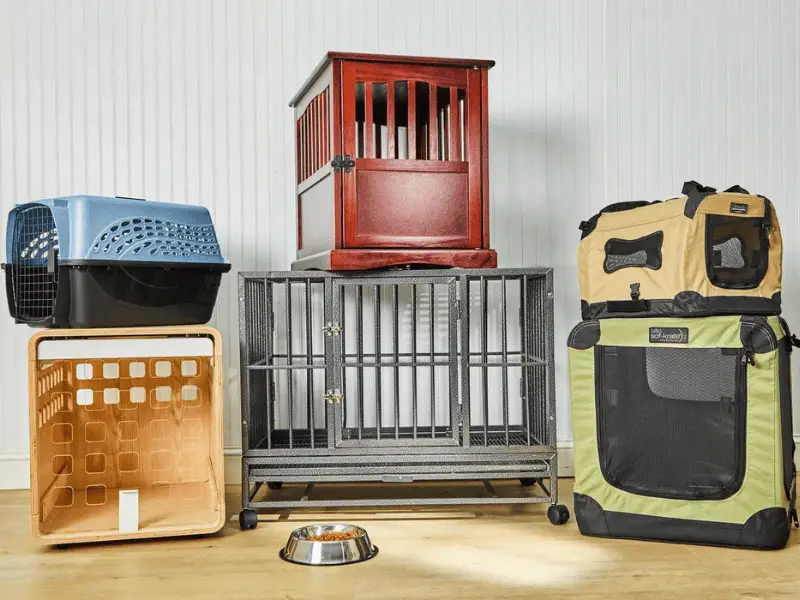How do you answer the question, How Big is a Dog? The size of a dog can affect many aspects of ownership, including feeding, exercise needs, living space requirements, and potential health issues.

The size of a dog can also impact its behavior and temperament. Therefore, it is essential to understand the different sizes of dogs and their specific traits and characteristics.
The size of a dog can greatly vary based on the breed, and even within the same breed, individual dogs can vary in size based on their genetics and environment.
Defining the Different Sizes of Dogs
Dogs are typically categorized into three main size groups: small, medium, and large. However, some kennel clubs and organizations also recognize extra-small (or toy) and giant categories.
- Toy or Small Breeds – These dogs are generally the smallest, with adult dogs often weighing 10 pounds or less. Examples include the Chihuahua, Pomeranian, and Yorkshire Terrier.
- Medium Breeds – Medium-sized dogs typically weigh between 20-60 pounds. Examples include the Beagle, Border Collie, and English Bulldog.
- Large Breeds – Large breeds generally weigh over 60 pounds. This group includes breeds like the Golden Retriever, German Shepherd, and Boxer.
- Giant Breeds – This category includes the largest dog breeds, often weighing over 100 pounds. Examples include the Great Dane, Saint Bernard, and English Mastiff.
Again, these categories are not strict, and individual dogs may be larger or smaller. Other factors like the dog’s height and length can contribute to their overall size.
A healthy weight for a dog will also depend on the dog’s breed and individual metabolism. It’s always a good idea to consult a veterinarian to determine a healthy size for any specific dog.
More about the Different Sizes of Dogs
According to the American Kennel Club (AKC), there are four main categories: toy dogs, small dogs, medium dogs, and large dogs.

Toy dogs are the smallest category weighing up to 10 pounds as adults; small breeds weigh between 11-25 pounds; medium breeds weigh between 26-50 pounds, whereas large breeds weigh over 50 pounds.
It’s important to note that although weight is typically used to classify dog sizes, height also plays a role in determining whether a breed falls into one category or another.
For example, some breeds may fall into the toy or small category based on their height but exceed the weight limit for that group due to their bone density or muscle mass.
It’s essential to consider weight and height when determining what size group your pet falls into.
Overview of Dog Sizes
Dogs come in various sizes, from tiny toy breeds that can fit in your purse to giant breeds that can weigh over 200 pounds.
Understanding a dog’s size is crucial for several reasons, including choosing the right breed for your lifestyle and home, providing appropriate care and nutrition, and ensuring safety when interacting with other animals and people.
There are four main categories of dog sizes: toy dogs, small dogs, medium dogs, and large dogs. Each category has specific characteristics and traits that set them apart from one another.
Toy Dogs
Toy breeds are the smallest of all dog breeds. They are typically under 10 inches tall at the shoulder and weigh less than 12 pounds.
Despite their small size, they have big personalities. Some popular toy breeds include Chihuahuas, Pomeranians, and Yorkshire Terriers.

Chihuahuas are known for their spunky attitude and loyalty to their owners. They can be stubborn during training but respond well to positive reinforcement techniques such as treats or praise.
Pomeranians are affectionate dogs that love being around their owners all the time. They have a thick coat of fur that requires regular grooming to keep it clean and healthy.
Yorkshire Terriers are small but mighty dogs with tons of energy despite their tiny size. They make excellent companions for those who want a playful yet low-maintenance lapdog.
Small Dogs
Small dog breeds range from 10-25 pounds in weight and can stand up to 18 inches tall at the shoulder. Some popular small dog breeds include Shih Tzus, Dachshunds, and Boston Terriers.
Shih Tzus are companion dogs known for their sweet temperament and fluffy coat of fur that requires daily brushing to prevent matting.
Dachshunds come in two sizes – standard and miniature. They are playful and curious dogs that require a lot of mental stimulation to keep them happy.
Boston Terriers are affectionate family dogs that love to play and cuddle with their owners. They are intelligent and easy to train, making them ideal for first-time dog owners.
Medium Dogs
Medium dog breeds weigh between 25-50 pounds and can stand up to 20-24 inches tall at the shoulder.

Some popular medium dog breeds include Labrador Retrievers, Border Collies, and Boxers. Labrador Retrievers are one of the most popular breeds in the world due to their friendly personality, loyalty, and intelligence.
They make excellent family dogs that are great with children. Border Collies are highly intelligent working dogs that excel in tasks such as herding or agility competitions.
They require a lot of exercise and mental stimulation to prevent boredom or destructive behavior. Boxers are playful yet loyal dogs that make excellent companions for families or individuals who want an active lifestyle.
Large Dogs
Large dog breeds can weigh over 50 pounds and stand over 24 inches tall at the shoulder. Some popular large dog breeds include Great Danes, Saint Bernards, and Mastiffs. Great Danes are gentle giants known for their massive size yet calm demeanor towards people they trust.
Saint Bernards were originally bred as rescue dogs in the Swiss Alps due to their strength, intelligence, and loyalty towards their handlers. Mastiffs have a powerful build coupled with a gentle personality towards their family members but may display aggression towards strangers if not properly socialized from an early age.

Understanding the different sizes of dog breeds is crucial for choosing the right breed for your lifestyle and providing appropriate care for your furry friend’s needs. Whether you prefer a tiny lapdog or a large companion ready for outdoor adventures, there is always a perfect fit waiting to be your loyal companion.
Niche Subtopics on Dog Sizes
Height vs Weight in Determining Size
When determining a dog’s size, two factors come into play: height and weight. Both factors are important because they can indicate different things.
Height can give an idea of a dog’s physical presence, while weight can show how much mass a dog carries. Usually, height is measured at the highest point of the withers – which is where the base of the neck meets the spine.
The measurement is taken from this point to the ground. Height ranges vary between breeds, but it typically falls under one of four categories: toy, small, medium, or large.
However, weight can be used as another factor to determine size for breeds with a larger height variance. For example, two dogs could both be 18 inches tall at their shoulders but one could weigh 20 pounds while another weighs 80 pounds making them vastly different sizes even though they have similar heights.
Breed Standards for Size Classification
Every breed has standard classification based on size ranges established by kennel clubs such as The American Kennel Club (AKC) and The Kennel Club (KC) in United Kingdom which will classify breeds into small, medium, and large categories as well as provide detailed descriptions for each breed’s characteristics and traits.
These standards help ensure that breeding practices are consistent so that dogs display consistent looks and traits across generations. The classification standards also help ensure that prospective owners know what to expect when adopting or buying dogs from breeders.
Experts in each specific dog breed carefully develop the breed standard for each classification after considering factors like temperament, energy level, and physical characteristics such as height, weight, coat type, etc.
It’s important to note that these standards aren’t universal across all organizations and regions. However, it’s always valuable information for any pet lover who wants to know more about the classification of dogs and how they differ in size.
Rarely Known Small Details about Dog Sizes
The World’s Smallest Dog Breed – The Chihuahua
The Chihuahua is a breed of small dog that originated in Mexico. It is considered the world’s smallest dog breed, with a height of 6-9 inches (15-23 centimeters) and weight ranging from 2 to 6 pounds (0.9 to 2.7 kg). Despite their small size, they are known for their big personality and can be quite feisty.

One interesting fact about Chihuahuas is that they have the largest brain-to-body size ratio of any dog breed. This means that they have a higher cognitive ability than other dogs, making it easier to train and teach new tricks.
They also have an average lifespan of 12-20 years, making them one of the longest-living breeds. Another fascinating detail about Chihuahuas is their unique coat patterns and colors.
They come in a variety of colors, including black, white, fawn, chocolate, cream, and more. Some even have markings or spots on their coat that resemble other animals like cows or leopards.
It’s not uncommon to see Chihuahuas with different-colored eyes too! Overall, the Chihuahua may be small, but they are full of surprises.
The World’s Tallest Dog Breed – The Irish Wolfhound
The Irish Wolfhound is one of the oldest breeds in existence today and holds the title of the world’s tallest dog breed. Males can reach up to 32 inches (81 cm) at the shoulder and weigh over 100 pounds (45 kg), while females can reach up to 30 inches (76 cm) tall and weigh between 90-120 pounds (41-54 kg).
They were originally bred as hunting dogs in Ireland to hunt wolves, elk, and deer. One of the lesser-known facts about Irish Wolfhounds is that they are known for their gentle and calm personalities.
Despite their size, they are often described as “gentle giants” and make great family pets. They are loyal and protective of their families but also get along well with other dogs and animals.
Another interesting detail about Irish Wolfhounds is that they have a high prey drive. This means that they have a natural instinct to chase after small animals like cats or squirrels.
While this can be trained out of them, owners need to keep an eye on them around smaller animals. Despite this trait, the Irish Wolfhound has a lot to offer as a companion dog due to its loyal nature and gentle personality.
Final Thoughts About The Answer to How Big is a Dog
Understanding the size of a dog is essential for any owner to ensure they can provide their pet with the necessary care and attention.
With this knowledge, owners can better understand which breeds are suitable for their living situation, lifestyle, and ability to provide for their specific needs.
Throughout this article, we have explored the different categories of dog sizes, from toy dogs to large dogs. We have discussed key traits and characteristics of each size category and delved into rarely known details about certain breeds’ sizes.
Additionally, we touched upon height vs weight in determining a dog’s size classification and breed standards. It cannot be stressed enough how important it is for owners to understand these various aspects of dog sizes.
It ensures that they select an appropriate breed that meets their needs and environment while also providing proper care based on their physical requirements. This knowledge will lead to happy, healthy pets and satisfied owners who can enjoy a long-lasting relationship with their furry companions.


